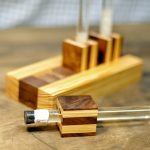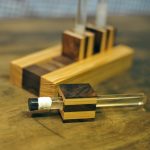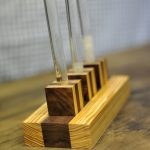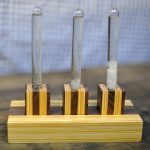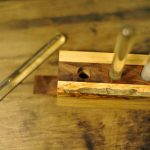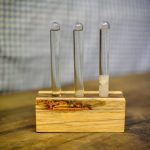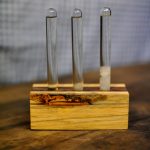Darwin’s naturalistic observations weren’t the only scientific endeavours being pursued aboard the HMS Beagle. The Captain, a young aristocrat named Robert FitzRoy was also engaged in the pursuit of knowledge and understanding. Mainly, FitzRoy was investigating tools that would assist in the accurate weather prediction and navigation of ships on oceanic journeys for the British Admiralty. This included study of the rather strange devices that eventually became known as FitzRoy Stormglasses. Similar devices already existed, but FizRoy perfected a consistent mixtures to make a stormglass that was more functional.
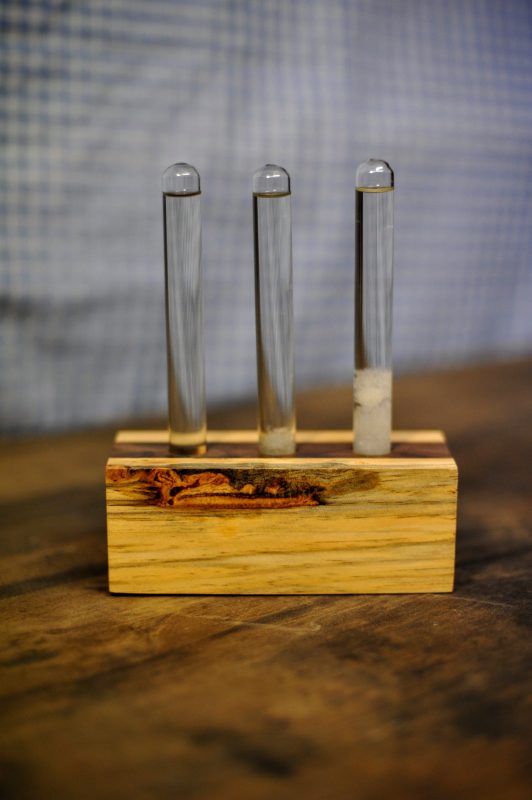
Now it sounds to me like FitzRoy was a pretty dedicated dude – making all manner of modifications to the ship before setting out. I won’t pretend to understand the import of most of his changes, but they included requests like switching out the iron cannons with brass ones to reduce the magnetic interference on the ship. This request was turned down by the Admiralty as extravagant, but once underway FitzRoy stopped off and paid for the replacement brass cannons himself.
FitzRoy was testing all manner of devices over the course of the Beagle’s famous second voyage. Accurate time keeping is the first step in accurate navigation and for a long while, a seaworthy clock was the holy grail of seafaring. As such, 22 Chronometers (!!!) were onboard, along with 5 fancy non-mercury barometers, and FitzRoy Stormglasses; sealed glass containers of a liquid mixture that precipitates crystals when subjected to certain atmospheric changes. It was thought that careful observation of these formations could help ship’s captains predict the weather. Turns out that was quite possibly wrong, but who cares?
So why make a storm glass?
Make your own storm glasses because they are beautiful. Make a stormglass because they let you observe changes in the natural world in an unexpected way. Make a stormglass because it’s rare you get to do chemistry at home and because it’s rarer still that you can combine a chemistry project with a woodworking project.
Over the course of the last year or so, I made these storm glasses for two friends that have ye old nautical interests, and I’m overjoyed with how they turned out as gifts that express some of the care I feel for these gentlemen. That’s what I love about making gifts yourself – you’re learning skills that will reinforce your feelings for the people in your life as you move forward, while you are also laying that sentiment into the item. It turns out that one of my friends doesn’t have room for the stormglass I made him in his life (a miscalculation on my part), but that’s okay. I’ll keep it and remember him by it.
And how to make a stormglass?
Well that’s the trick, isn’t it? You’ll remember that I mentioned I made these stormglasses over the course of a year, and that’s not an exaggeration. I researched several recipes for the liquid, from ye-olde to modern and after conversion from arcane units of measure I compared the recommended proportions to get a sense of the general ratio.
Ye Olde Stormglass Recipe:
Camphor – 2 drachm
Potassium nitrate – ½ drachm
Ammonium chloride – ½ drachm
Absolute alcohol – 2 ounces
Water – 2 ounces
Disolve.from Pharmaceutical Formulas
This is the basic recipe I worked from, though Barry Holloway’s advice on adjusting the recipe to one’s climate were invaluable as were the insights on the functional variations of the recipe discussed in the May 2008 issue of Weather.
Over the course of several weeks, I made several batches of the stormglass fluid with small variations in the proportions to increase or decrease the amount of precipitating crystals. What I was left with were three or four test tubes for each batch representing four variations on the recipe. None of which had the mix of clarity and crystals I was looking for. The trouble is that each batch takes time and care to heat, mix, and seal and that you can’t reliably review the results for more than a week which delays things significantly.
From there I reviewed the concentrations for each batch as well as the results and then planned a complex pattern of mixing together the batches in different ratios. Along with a series of indecipherable diagrams, this haphazard technique eventually yielded good results that fell on a fairly predictable spectrum! Accounting for loss and spillage and bad mixes there were enough successes to make two stormglass fixtures – each with a range of concentrations that allows them to be active and interesting in different conditions.
Tempests in a Teacups
With the chemistry worked out (or at least working), I set about building the stands. First of all the test tube stoppers aren’t very attractive, and I suspect they aren’t intended to seal a tube indefinitely. I added a thin layer of silicone sealant to help keep them attached. Unfortunately, that makes them even less attractive, so it’s important the stands completely cover the stoppers.
After laminating my stock together and roughing out the sizes I used the drill press to make a whole with a slightly wider aperture on the bottom to allow the stopper and the latex to clear, but quite tight to the tube diameter a the top so that there isn’t much of a gap between the tube and the stand, and also so that the stand can assist in supporting the tube and keeping it straight.
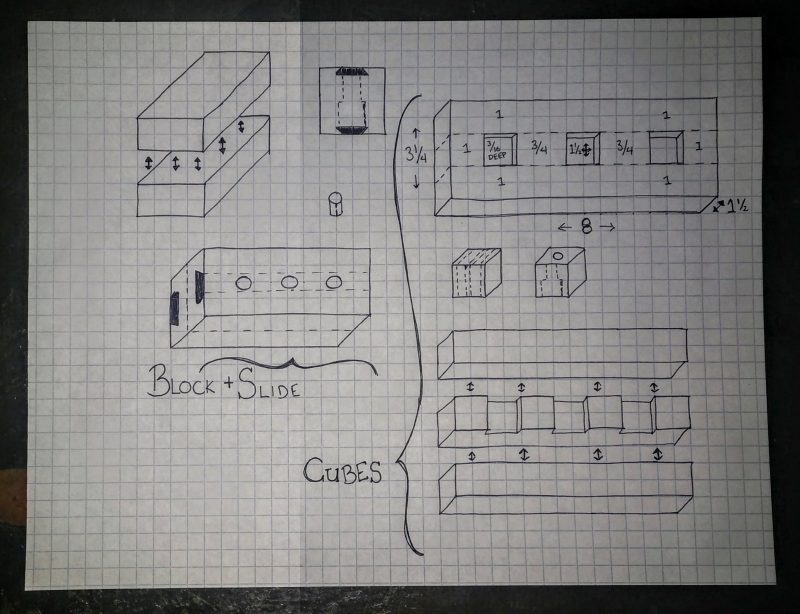
In the first version, I made it so that there are a few repeating elements and measurements, but ultimately the visual effect was a little busier than I wanted, so I simplified for version two – embedding the tubes directly into the base. Next time I make a stormglass case I’ll wrap the inset wood around the block I think. Which version do you like more?

